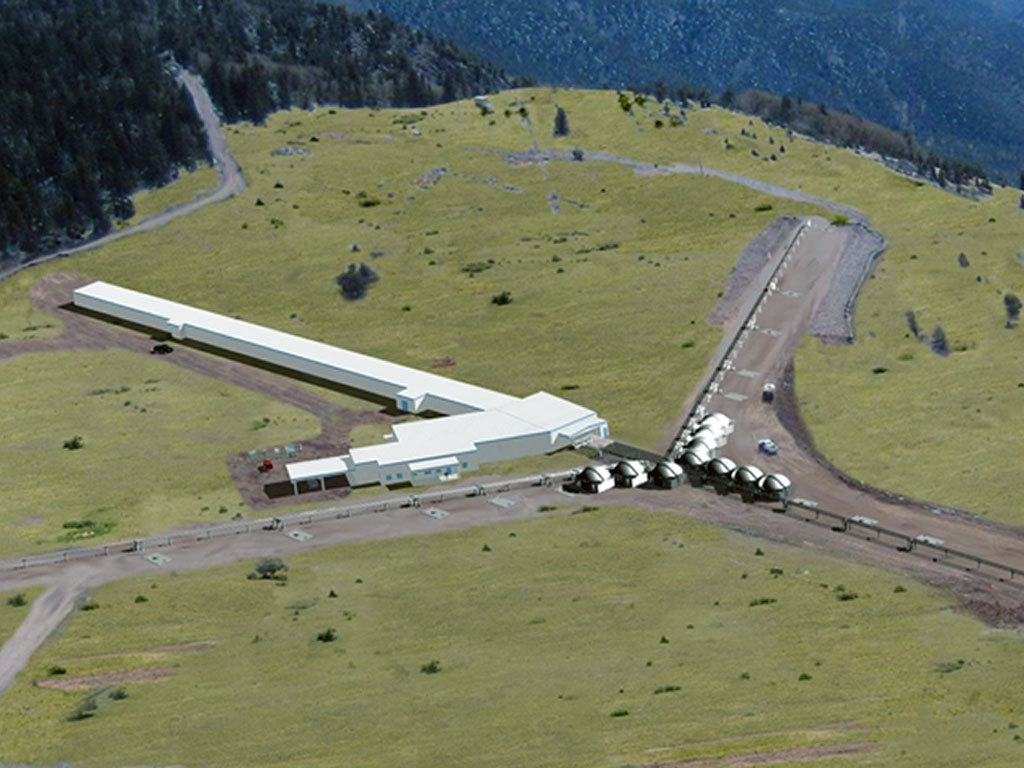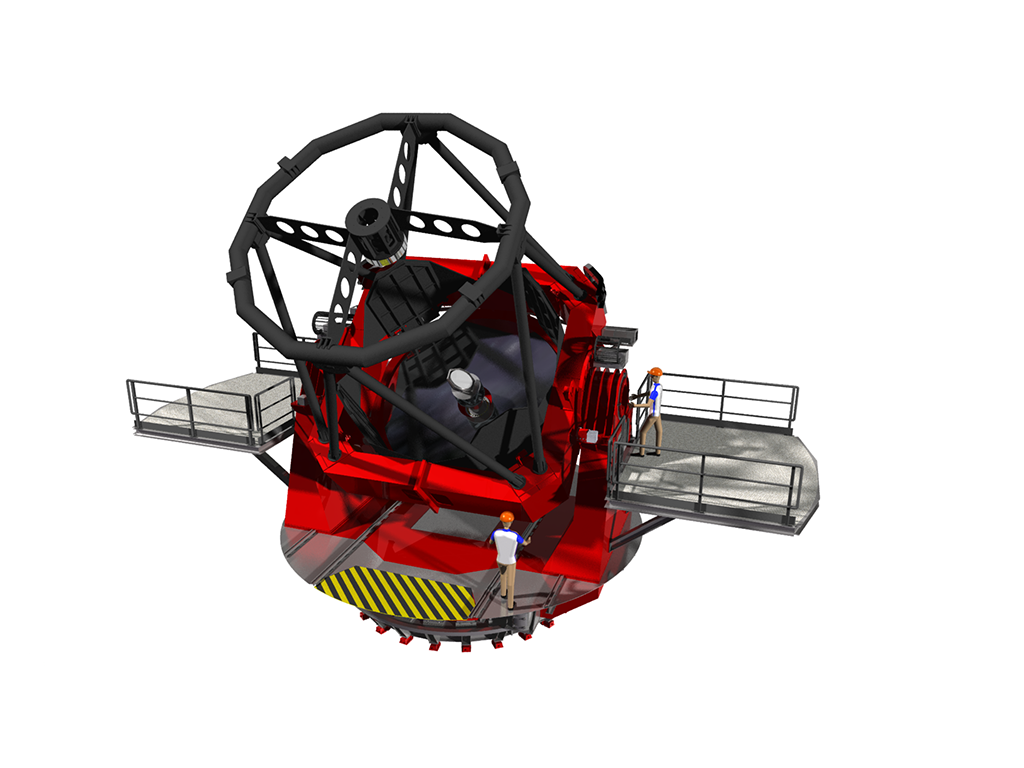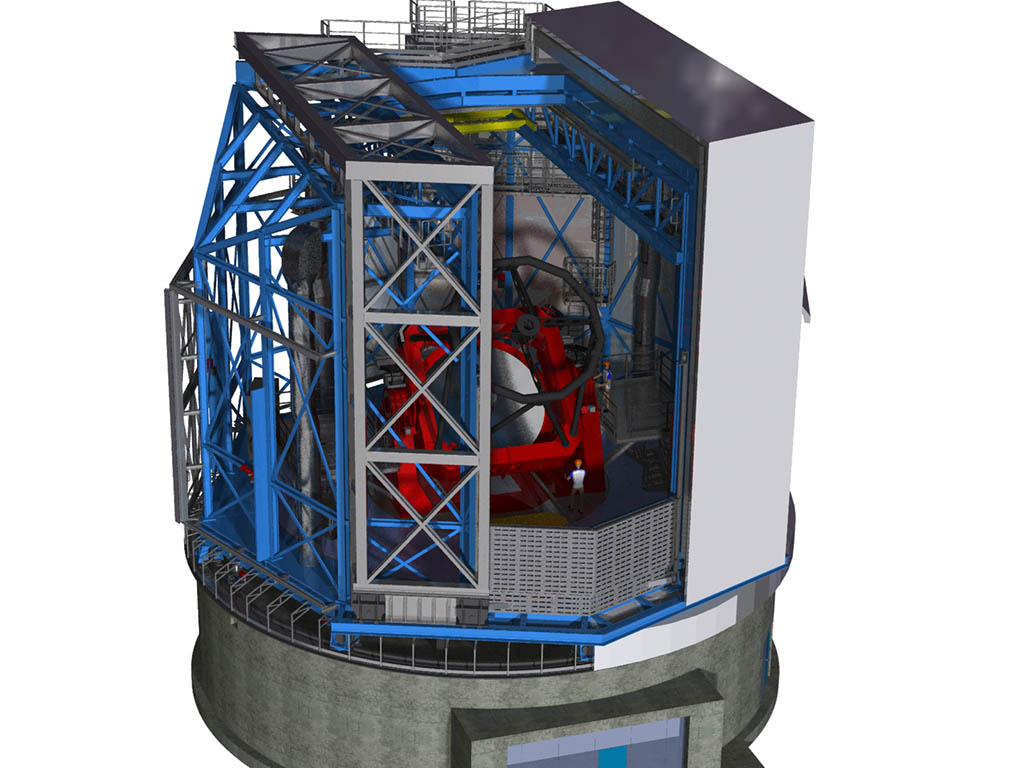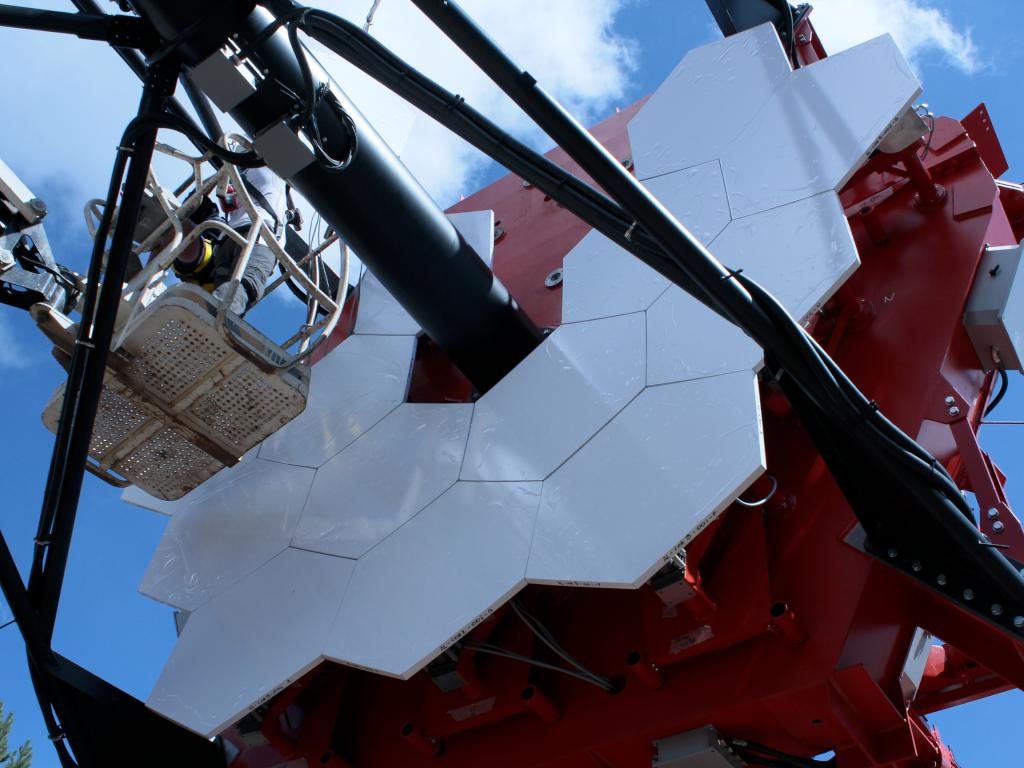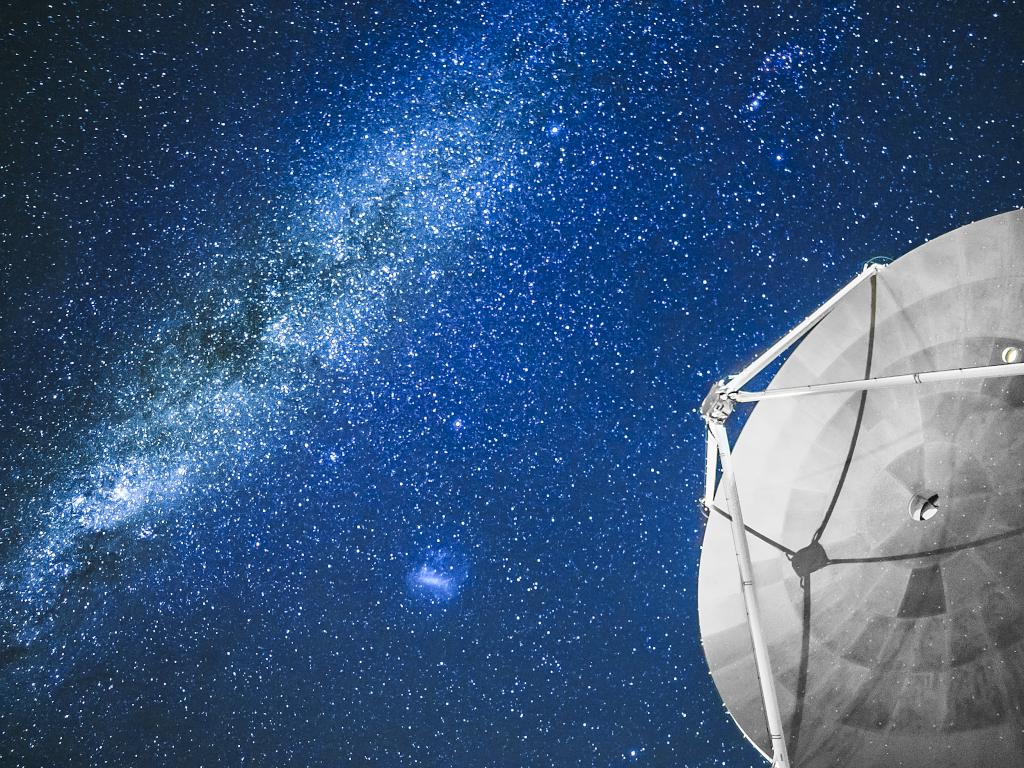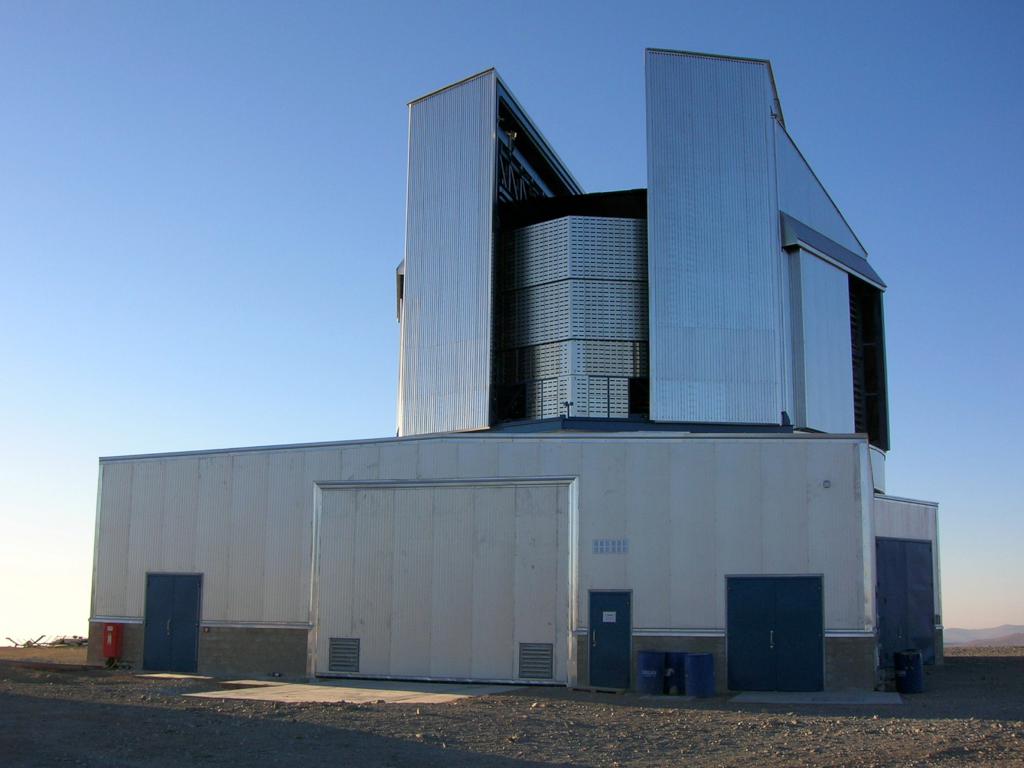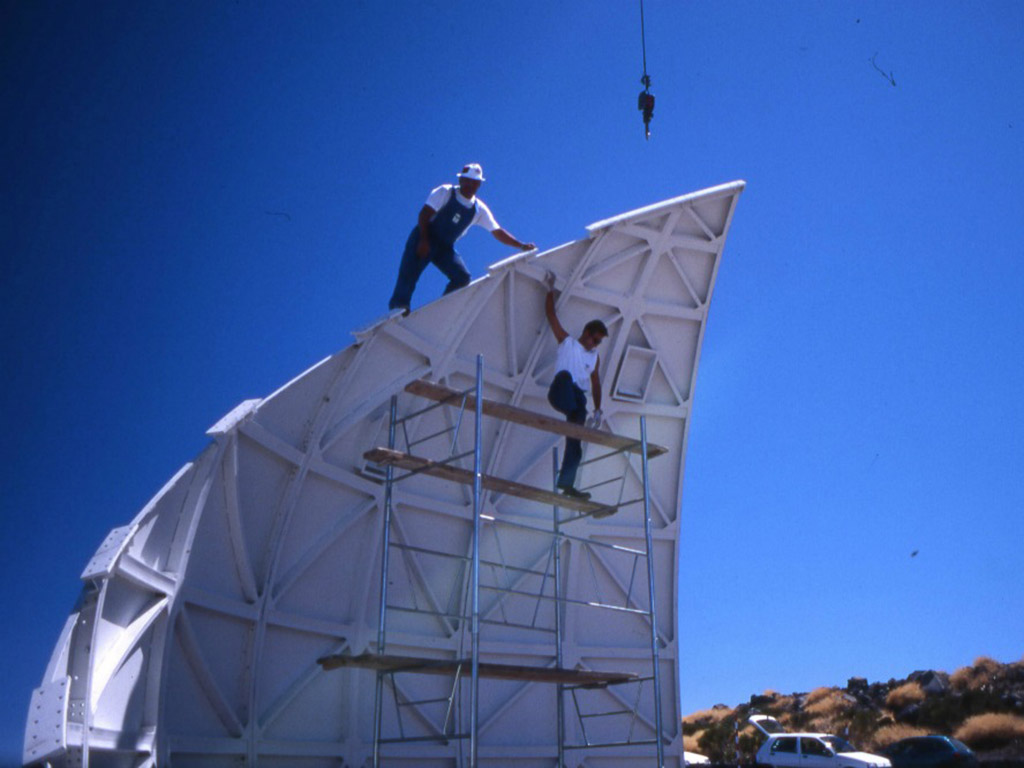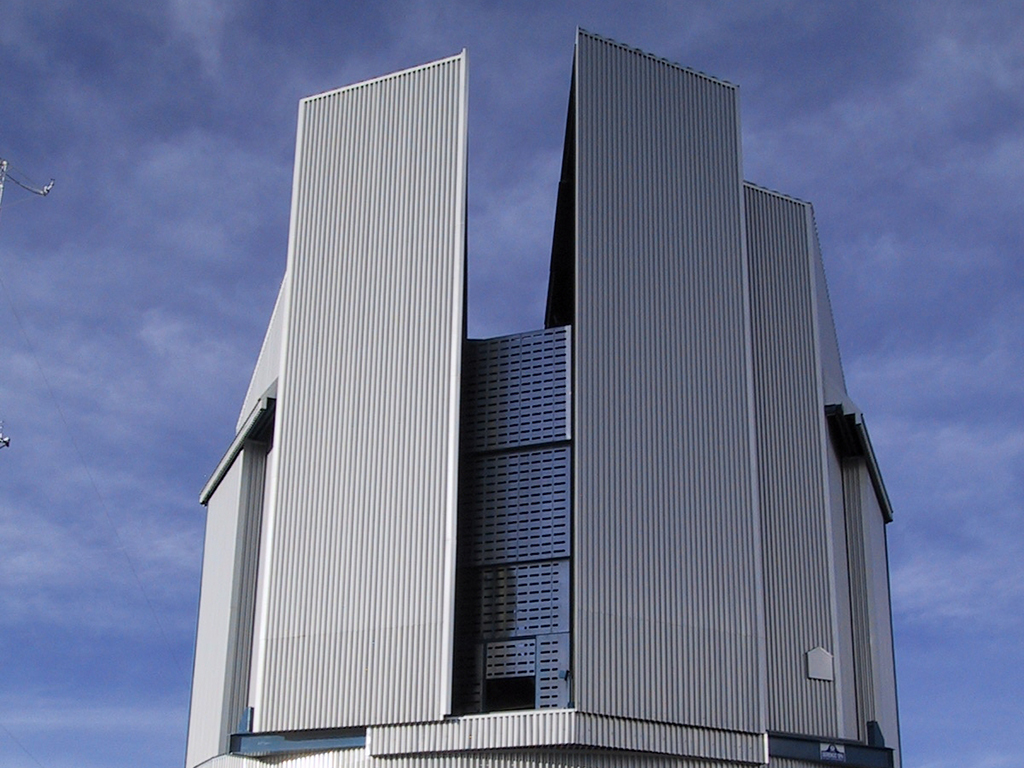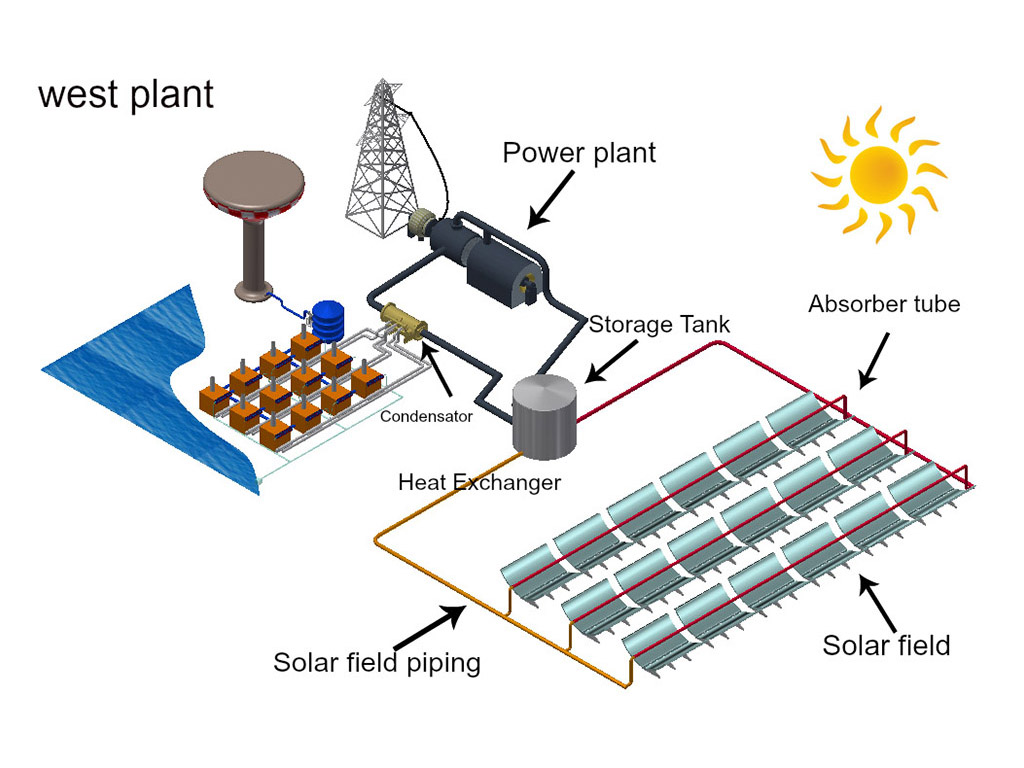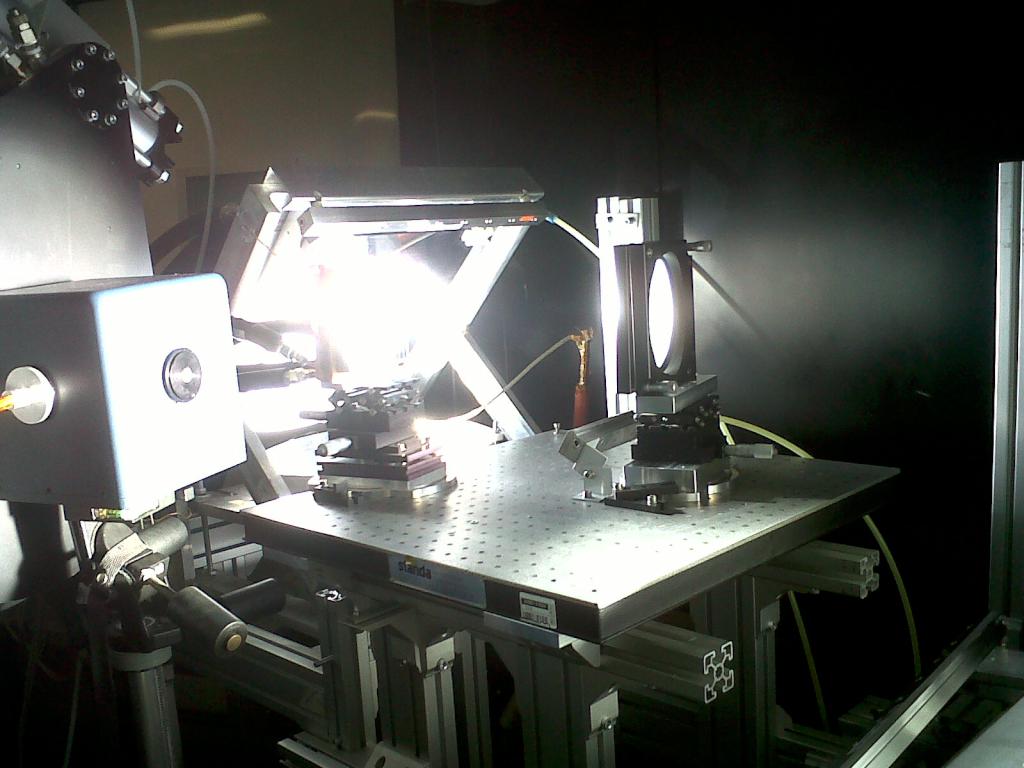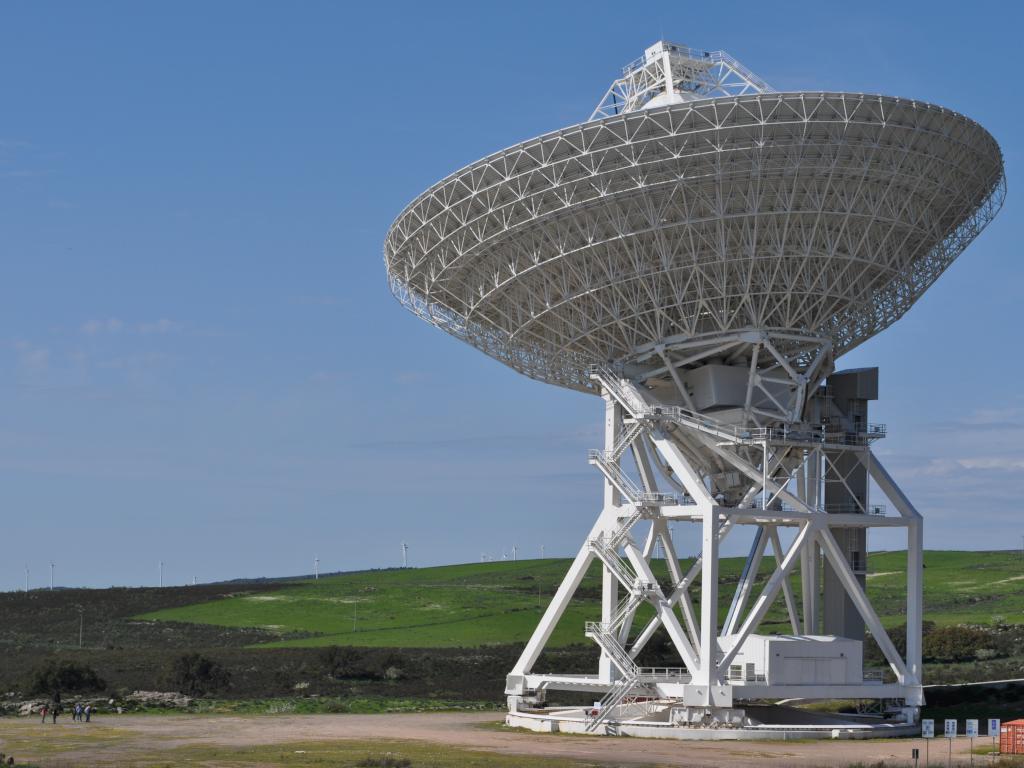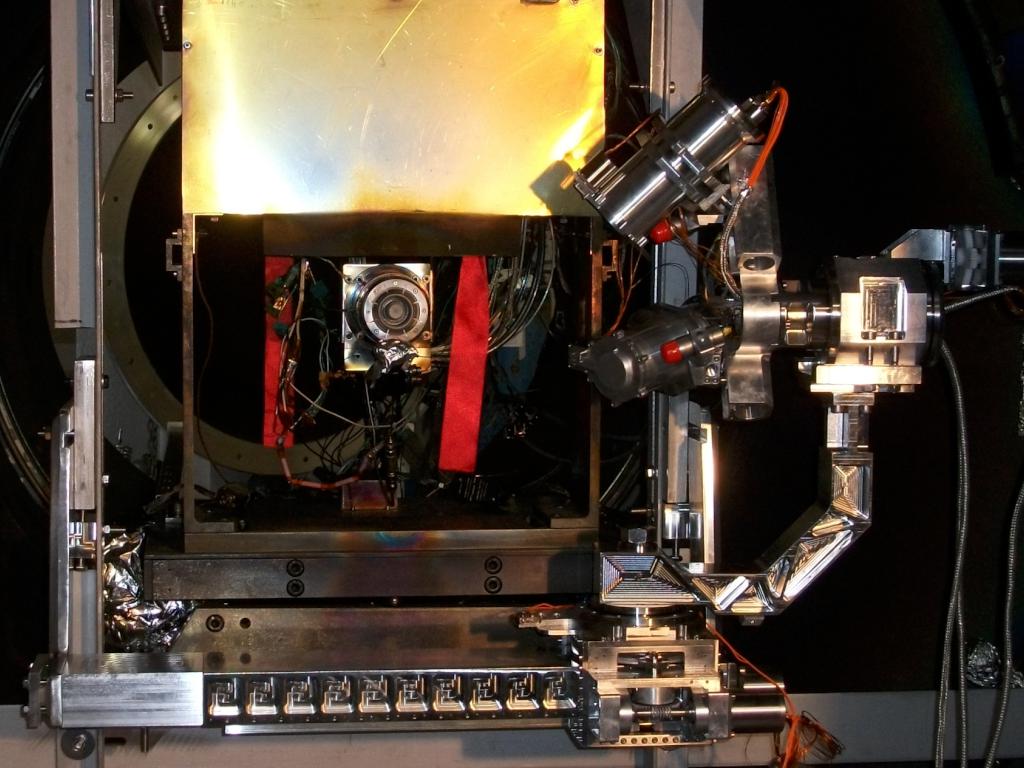LSST - Large Synoptic Survey Telescope
Site: Cerro Pachòn - Chile
State: under construction
Activities: Detail Design, Manufacturing, Pre-Assembly in Europe, Packing &Transport, Erection on Site, Commissioning and Testing activities
Date: 2014-2022
Client: NSF-AURA
Category: astronomy
Credits: EIE GROUP/ AURA
The Large Synoptic Survey Telescope
Overview:
The LSST (Large Synoptic Survey Telescope) is a public-private partnership between the National Science Foundation (NSF), the lead Federal Agency of the project, the Department of Energy and the Association Of Universities For Research In Astronomy (AURA), while the LSST Corporation which is clearly also involved in the project, is a non-profit association, set up to establish the additional partnerships necessary for the construction and operation as well to work with the scientific community.
The LSST will be a wide-field ( 9.6 deg²) optical survey, ground-based telescope, with a 8.4m diameter primary mirror and a 3.2 Gigapixel camera positioned directly under the secondary mirror. With a collective area of 40m² it has been designed to obtain multiple images covering the entire sky visible from Cerro Pachón – Chile every 3 nights, thus detecting any changes in the Universe.
The huge amount of data that will be gathered and processed over 10 years will be used to create a 3D map of the Universe with unprecedented depth and detail.
Thanks to its powerful camera, the LSST will provide high quality time-lapse images which will be used by scientists and students from all over the world to probe the mysteries of Dark Matter and the properties of Dark Energy, to take an inventory of the Solar System, explore the transient Universe and map the Milky Way.
It is estimated that thanks to the LSST, data will result in databases including 20 billion galaxies and stars.
The project is now in the construction phase and will begin regular survey operations by 2022.
Characteristics of the LSST Rotating Enclosure:
During 2014 EIE bid for the design and construction of the LSST Rotating Building and was awarded the contract in May, 2015.
The building which will house the LSST, has been designed to guarantee the telescope maximum exposure during observation activities and to protect it from the environment, strong desert winds and dust.
The Dome will also have the following characteristics:
• It will be provided with a light/wind screen to minimize the effects of stray and wind inside the building;
• It will be equipped with a controller ventilation and flushing system during night observations, so to minimize the thermal variations which could have effects on the image quality;
• Facilitate the maintenance of both Dome and Telescope;
• It will be provided with a thermal control system;
• It will be light-tight during the daytime to enable testing and calibration of the telescope’s optical system.
The LSST Rotating Dome will be 27m high, and will have a geometry similar to that of the 4 VLTs. It will reside on an insulated cylindrical concrete lower enclosure (or telescope pier), 17m high with a 30m diameter.
The rotation of the Dome will be completely independent from the Telescope (non-co-rotating) because of the compact three mirror optical system of the telescope. Freeing the Dome and the telescope azimuth rotations will facilitate maintenance, calibration and thermal control.
Science with LSST:
During the first months of operation alone, the LSST will scan more Universe than all previous ground-based telescopes.
The 3.2 Gigapixel camera it is provided with will survey the sky quickly and repeatedly, imaging every object multiple times. Thanks to a giant computer for data processing, the LSST will produce an entirely new view of our Universe enabling unforeseen discoveries.
The LSST will explore four main science themes:
• The Dark Universe: Dark Matter and Dark Energy;
• The Transient Universe;
• Solar System in detail: the outer Solar System and Near Earth Objects;
• Mapping of the Milky Way, its structure and evolution and the properties of all the stars around the Sun.
Link to LSST web page



